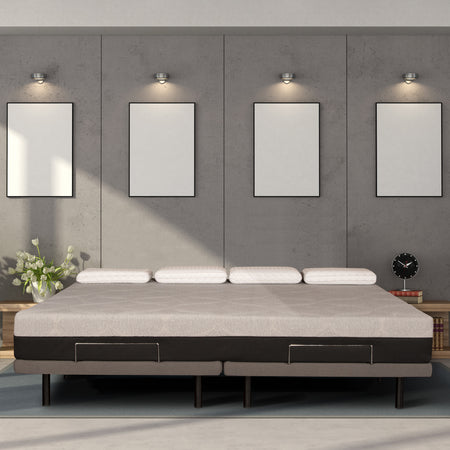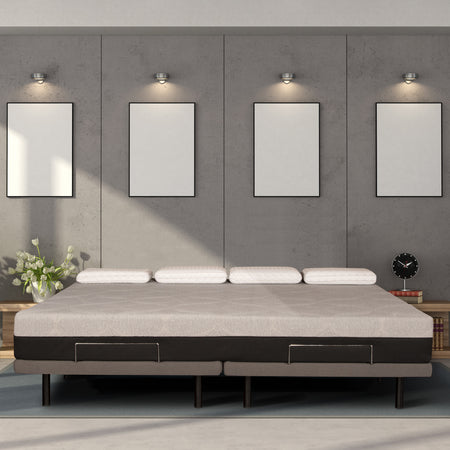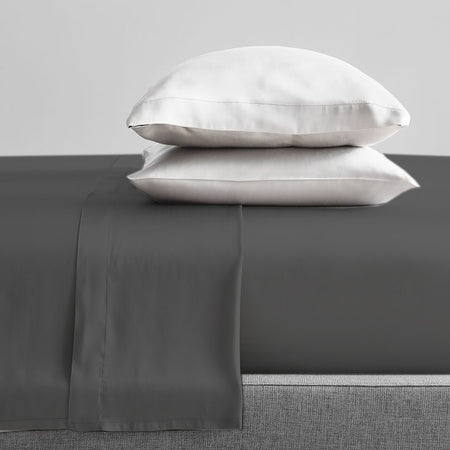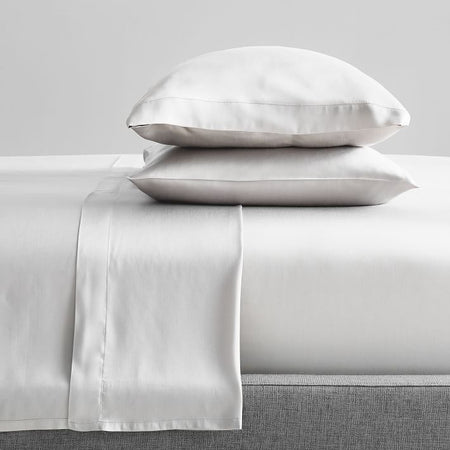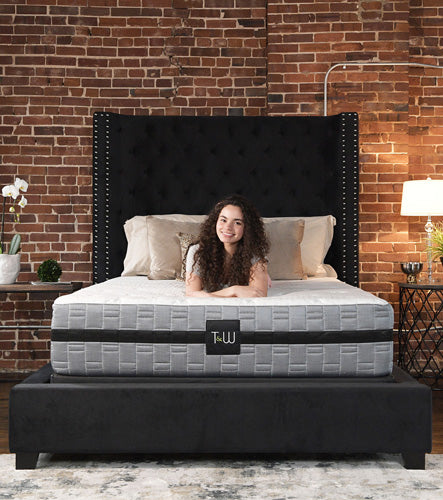Sharing a bed with your loved one is one of life's greatest joys. And it’s even better when you wake up next to them every morning. But if your loved one snores, tosses, turns, sleeps at a different time than you, or has different temperature preferences, your dream of peaceful nights can quickly become a never ending struggle for sleep. Add children or pets to the mix, and the situation can become even tougher. But with some practical strategies, you can create a restful sleep environment that works for everyone.
Reasons You May Have Difficulty Sleeping in a Shared Bed
We all know that sleep is critical to our health and wellness. While numerous resources share tons of information about how to sleep better and longer, most of them overlook a critical component – your partner. Here are some common causes of issues with sharing a space with a loved one:
Excessive Movement
When your partner constantly tosses and turns during the night, it becomes hard to fall or stay asleep. The constant movement is disruptive, uncomfortable, and downright frustrating and can wake you up multiple times throughout the night. The tossing and turning is often due to a small space or a mattress that’s too soft or too firm.

Leaving on Lamp Lights
This is unrelated to your bed, but if your partner leaves the lamp on to read or work late, it can make it hard for you to fall asleep. Light exposure disrupts your circadian system and keeps you awake for longer.
Different Sleep Schedules
If your partner sleeps and wakes up at the same time, that is good for you. But in many cases, you’ll have different sleep schedules. You might be an early bird, and your partner may be a night owl, which can be a problem when one gets into or out of bed.
Temperature Preferences
It’s common for couples to have different temperature preferences, with one liking the room cooler and the other preferring it warmer. This can make it hard to find a comfortable balance.
Different Sleep Positions
Lastly, your sleep positions can also be problematic, especially when choosing a mattress. If one of you prefers a firm mattress while the other likes it soft, it can be hard to find a happy medium.
Your Partner Snores
Snoring can be a nightmare – not just for you but for your partner as well. The noise can keep you awake, leading to sleep deprivation. Snoring is often caused by obstructive sleep apnea or other sleep disorders.
How to Ensure Both Partners Enjoy a Restful Night's Sleep

A good night's sleep is critical for good health. It improves your mood, brain performance, and health. When you don’t get enough quality sleep regularly, you may end up experiencing issues like irritability, poor concentration, and even long-term health problems.
According to NIH, the cumulative effect of sleep loss is associated with an increased risk of diabetes, hypertension, heart attack, depression, stroke, and obesity. So, if you’re not getting a good night's sleep because of sleep disturbances, it’s best to fix the problem before it escalates.
Here are some ways to ensure you and your partner enjoys a restful night’s sleep:
Upgrade to a Family Bed
A family bed is much larger than a king size bed and provides ample space for everyone. It has enough room to accommodate you, your partner along with children or pets. Family beds are also customizable, meaning they can accommodate varying needs. Whether you have different sleep positions, temperature preferences, or sleep schedules, a family bed can help you find harmony in shared sleep spaces.
Sync Your Schedules
Try to align your sleep schedules as much as possible. This might mean going to bed and waking up at the same time, even on weekends. If aligning your schedules isn't feasible, use earplugs or a white noise machine to mask sounds when one partner goes to bed later or wakes up earlier. This can help minimize disturbances and ensure you enjoy uninterrupted sleep.
Use Adjustable Lighting
Invest in adjustable or dimmable lamps to allow late-night reading without disturbing your partner. These lamps can be dimmed to a comfortable level that won't interfere with your partner's ability to fall asleep. Alternatively, consider using a sleep mask to block out unwanted light. This simple solution can prevent the light from disrupting your circadian rhythm, helping you to fall asleep faster and stay asleep longer.
Manage Temperature Preferences
Use separate blankets or a dual-zone heating blanket to accommodate different temperature preferences. This way, each partner can enjoy their ideal sleeping temperature without compromise. For example, one side of the bed can be kept cooler while the other is warmer. Better yet, invest in modern mattresses with temperature-regulating features.
Find the Right Mattress

Consider a mattress that offers customizable firmness levels on each side so both partners can have their preferred comfort level. There are mattresses available that can be adjusted for firmness on each side, catering to different sleep positions and preferences. Alternatively, a medium-firm mattress can sometimes strike a balance that works for both. A mattress designed to absorb motion can help reduce the impact of tossing and turning, allowing both partners to sleep peacefully.
Seek the Help of a Sleep Doctor
If you and your partner continue to experience sleep disturbances despite trying various solutions, it may be time to seek the help of a sleep doctor. A sleep doctor can diagnose underlying issues such as obstructive sleep apnea, restless leg syndrome, or other sleep disorders that contribute to sleep deprivation. They can also recommend treatments and strategies tailored to your specific needs, helping you both achieve better-quality sleep.
Get Your Family Bed at The Bedding Mart
If you have anxiety sleeping next to someone due to the issues we’ve discussed above, the best solution is to get a family bed. It’s large, adjustable, and comes with features to accommodate varying needs. The Bedding Mart has a huge selection of family mattresses at great prices. Visit us today to find the right one for your family!


